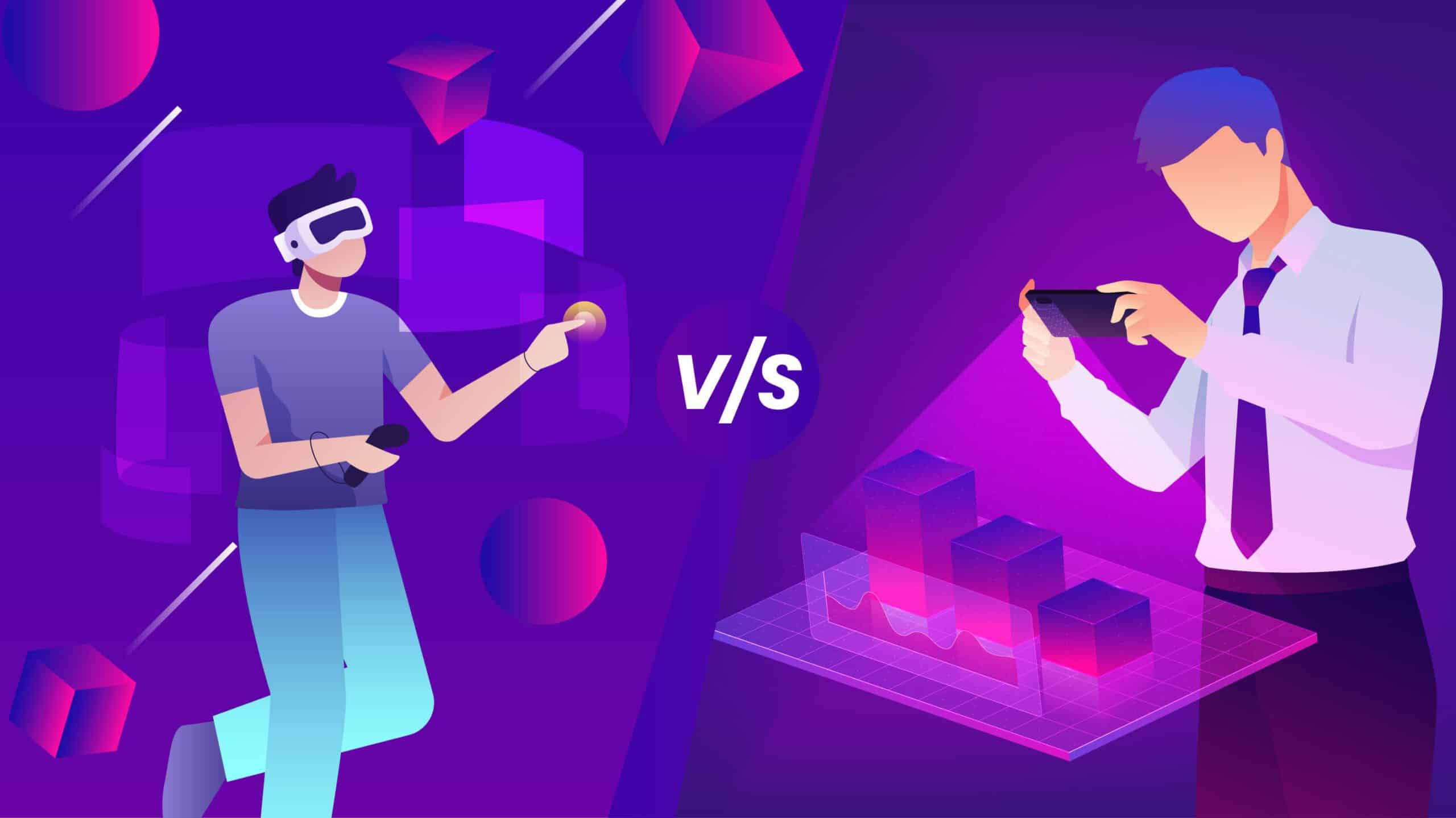AR vs VR: Exploring the Differences and Applications
Augmented Reality (AR) and Virtual Reality (VR) have revolutionized the way we perceive and interact with digital content. These technologies have gained immense popularity in recent years, opening up new possibilities in various industries. In this article, we will delve into the world of AR and VR, highlighting their differences, applications, and potential impact on our lives. In a world increasingly driven by technological innovations, AR and VR stand out as two of the most transformative technologies. Augmented Reality enhances the real world by overlaying digital information onto our surroundings, while Virtual Reality creates an entirely immersive digital environment that users can explore.
Understanding Augmented Reality (AR)
What is AR?

AR is a technology that enhances our perception of reality by superimposing computer-generated content such as images, videos, or information onto our view of the physical world. Unlike VR, which replaces the real world with a simulated one, AR adds layers of digital data to our real-world experiences.
How Does AR Work?
AR technology utilizes cameras and sensors to understand the user’s environment. It then processes this data and projects relevant information onto the user’s field of view, often through devices like smartphones, smart glasses, or AR headsets.
Applications of AR
AR finds applications in various fields, including:
- Retail: Enabling virtual try-ons and product visualizations.
- Navigation: Overlaid directions and points of interest.
- Education: Interactive learning through 3D models and annotations.
Exploring Virtual Reality (VR)
What is VR?

VR, on the other hand, immerses users in a completely simulated environment, shutting out the real world. It often involves wearing a VR headset that covers the user’s field of vision and responds to their head and body movements.
How Does VR Work?
VR relies on advanced headsets that track the user’s movements and adjust the display accordingly, giving the illusion of being present in a digital world. It’s a complete sensory experience, often involving not only sight but also sound and touch.
Applications of VR
VR has diverse applications, including:
- Gaming: Creating immersive gaming worlds and experiences.
- Training: Simulating real-world scenarios for training purposes.
- Therapy: Exposure therapy for treating phobias and PTSD.
AR vs VR: Key Differences
While both AR and VR offer immersive experiences, they differ significantly in their core concepts and applications.
Definition and Experience
AR supplements the real world with digital elements, enhancing our perception of reality. In contrast, VR transports users to entirely virtual realms, providing a fully immersive experience.
Interaction with the Environment
AR maintains interaction with the real world, allowing users to engage with both digital and physical aspects simultaneously. VR, however, disconnects users from the real environment, creating a closed-off digital world.
Use Cases and Industries
AR finds use in industries like retail, education, and healthcare due to its overlaying nature. VR excels in gaming, simulations, and training where full immersion is key.
The Synergy of AR and VR
Interestingly, AR and VR are not mutually exclusive. The line between them can blur, leading to the concept of Mixed Reality (MR), where digital and physical elements interact seamlessly.
Blurring the Lines
Mixed Reality combines the strengths of both AR and VR, enabling experiences that blend virtual and real elements cohesively. This opens up innovative possibilities in design, collaboration, and entertainment.
Collaborative Potential
MR’s collaborative potential is remarkable. Imagine engineers working on a virtual prototype while seeing their real hands and tools. This synergy enhances efficiency and creativity in various fields.
Implications in Education and Training
AR and VR are reshaping education and training methodologies.
AR in Education
AR brings subjects to life through interactive models, fostering engagement and comprehension. Students can explore 3D representations of complex concepts, making learning enjoyable and effective.
VR in Training
VR-based training provides a safe environment for practicing skills. Pilots, surgeons, and military personnel can simulate high-pressure scenarios without real-world risks.
Impact on Healthcare and Medicine
AR and VR are making significant strides in the medical sector.
AR Applications in Healthcare
AR-assisted surgeries provide surgeons with real-time data during procedures. Patients can visualize potential outcomes before undergoing treatments.
VR Applications in Medicine
VR helps manage pain and anxiety. It’s also utilized in physical therapy, aiding in motor skills recovery and pain distraction.
Gaming and Entertainment Evolution
Gaming and entertainment benefit greatly from AR and VR technologies.
Immersive Gaming with VR
VR gaming offers unparalleled immersion. Players enter the game’s world, experiencing actions as if they were part of it.
AR’s Integration in Entertainment
AR enhances entertainment experiences by adding digital layers to real-world settings. Imagine watching a sports match with real-time player stats overlaid on the screen.
Overcoming Challenges and Concerns
While AR and VR offer immense potential, they also face challenges.
Technological Limitations
AR and VR require robust hardware and software for seamless experiences. Striking a balance between performance and accessibility is crucial.
Ethical and Privacy Concerns
Privacy concerns arise as AR and VR collect user data for customization. Stricter regulations are necessary to ensure data protection.
The Future of AR and VR
The future of AR and VR looks promising, with ongoing advancements and integration into our daily lives.
Advancements on the Horizon
Expect improvements in display quality, device portability, and interaction methods. These advancements will make AR and VR more user-friendly and versatile.
Integration into Daily Life
AR and VR will become integral to various industries. Remote collaborations, virtual tourism, and interactive shopping experiences are just a glimpse of what’s to come.
Conclusion
As AR and VR continue to push the boundaries of technology, our world transforms into a realm where digital and physical coexist harmoniously. With their unique features and applications, AR and VR are shaping industries, enhancing education, and providing innovative solutions across various sectors.

